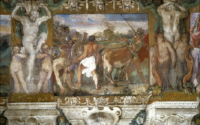A History of Rome and Pluto Returns Part 4: Medieval Rome’s Pluto Returns: Religious Reform within While Chaos is Outside

While the last Western Roman Emperor was deposed over 1500 years ago in Rome, and over 500 years in the Eastern Empire, the city of Rome still exists to this day. And yes, the city continued to experience its Pluto Returns just as much the political continuation of Rome did in the Byzantine Empire.
Part of the answer of why it continued to experience Pluto Returns lies with the one Roman Institution that has survived into modern times, the Pontifex Maximus. Better know today as the Pope. Originally this position was the head priest all Rome’s pagan religion. Since the time of Julius Caesar, this office as always been held by a political leader in Rome. Typically it was held by the Emperor.
This is why in during the Roman Empire, early emperors where raised to godhood after death, while the later Christian ones were raised to sainthood. All emperors claimed divine authority directly from God. By the time of the Western Empire’s collapse, this title was more commonly associated with the Bishop of Rome, rather than the emperor. But it wasn’t until the Renaissance Era, the the pope commonly used it because many early Popes were suspicious of its pagan origins.

But this illustrates a major point. During the sixth Pluto Cycle, Rome was in the process of switching from secular control to religious control. When Byzantium was reaching its greatest territorial extent, control of Rome was passed between various Germanic Kingdoms that conquered Italy and on occasion by Byzantium itself. So the secular political situation in Rome and most of Italy itself was a complete instability. People often didn’t know who to turn too. The only constant was the Pope.
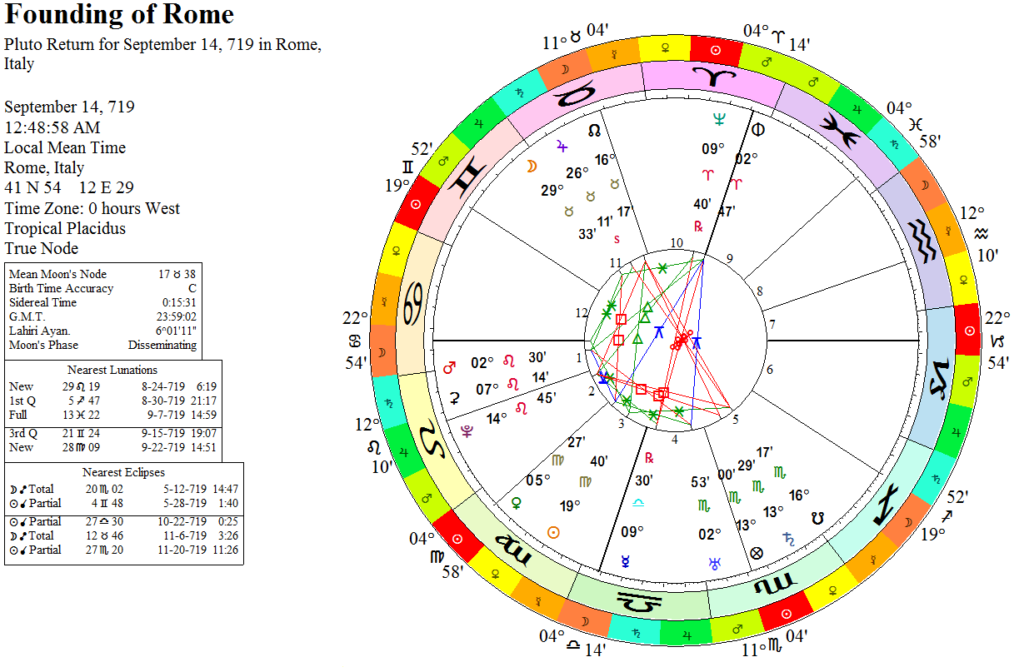
When the sixth Pluto Return occurred in 719-720 AD the Lombards expanded into Italy gaining control of Byzantium control territories in northern Italy. Here, the governance of Rome really began to shift from secular control to religious control. While still being part of Byzantium Empire in 722 AD, Pope Gregory II breaks with the Eastern Emperor Leo III.

A few years later the Lombard King makes the Donation of Sutri, giving the Pope Gregory II control of the city of Sutri. These events laid the foundation for the creation of Papal States a short time later. This state was governed by a form of Theocracy. This lead to an interesting situation during most of the Middle Ages, the Pope not only was the head of the Catholic Church, but also the local warlord who ruled Rome and most of central Italy with an iron fist. Thus Rome got a new governmental system which would last nearly the next five Pluto Cycles during its sixth one.

For the seventh Pluto Cycle, on occasion the Pope was somewhat like a vassal to the Lombard and later the Frank Kings and Emperors. Technically the Papal States operated independently, but other states had larger armies than the Pope. So usually he played diplomacy to avoid conflict with the larger powers in Europe. This was something the Pope was in a prime position to do as he was the highest religious official on the continent.

This is what occurred during the seventh Pluto Return in 965-966 AD. Shortly before this date, King Otto I of Germany invaded Northern Italy and conquered it. The Pope at the time decided to the crown Otto I Emperor in 961 AD and this led to the creation of the Holy Roman Empire, which lasted for nearly 1000 years in some form before leading to the creation of the modern state of Germany.
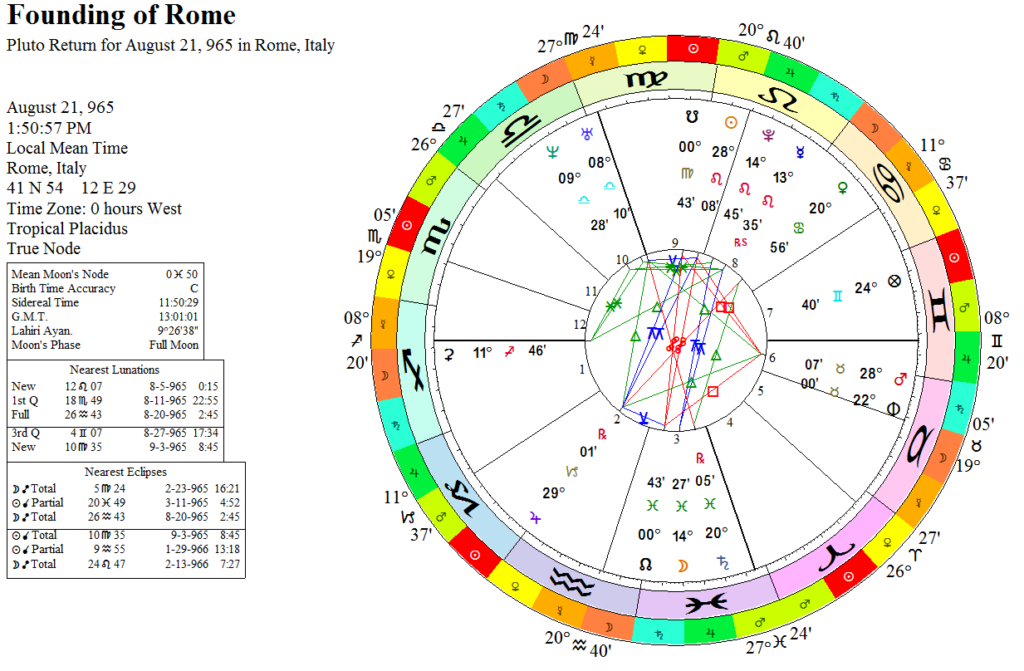
During the eighth Pluto Cycle, the temporal power of the Popes is challenged during the time when the Normans and the Arabs threaten southern Italy and Rome. In the later half this cycle, the temporal power of the Popes is reasserted. This is the rise of the Medieval Papal States which exerted considerable influence in the Italy and Europe.

The eighth Pluto Return was in 1210-1212 AD. During this return, Pope Innocent III ruled Rome. He was responsible for organizing the Fourth Crusade which sacked Constantinople. He was one of the most powerful Popes of the Middle Ages and is the guy responsible for ending the heresy of the Cathars in southern France. He is one of the authoritarian popes of all time.
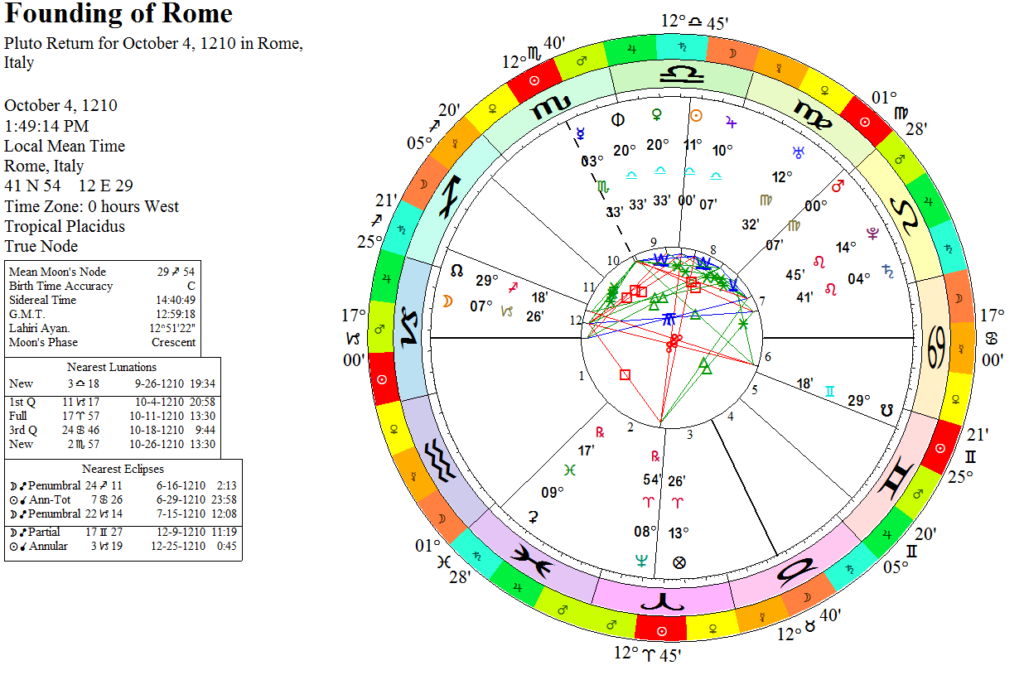
The beginning of the ninth Pluto Cycle saw the Popes move to France after a conflict with the French King for a period of time. During this time Rome fell into a state of disrepair. When the Pope returned to Rome, it coincided with the emergence of the Renaissance in Europe. The Papal States were one of the centers of this in Italy due to the vast wealth of the Catholic Church. The overall theme for Rome was the death and rebirth of the City itself.


The ninth Pluto Return for the Papal States also ties in with the Byzantium story Just like the eighth Pluto Return. When news of the fall of Constantinople reached Pope Callixtus III, he canceled the rebuilding of Rome project, and immediately funneled the money towards a crusade against the Ottomans. To the people of Europe in this era, any Muslims presence in Europe was seen as an existential threat, which is very different than today’s Europe.
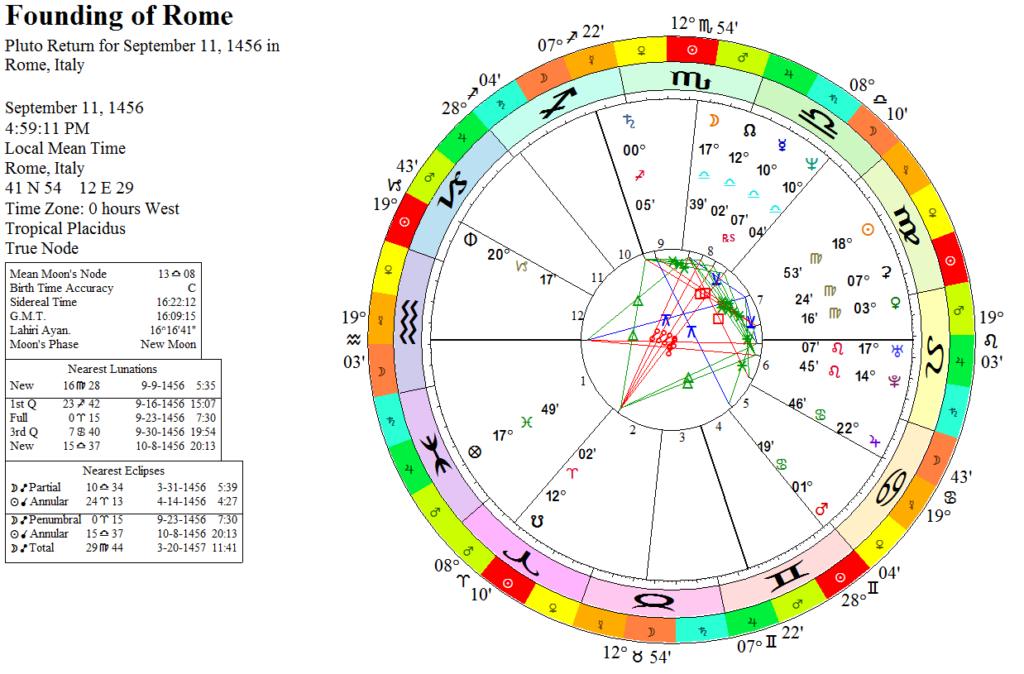
The Byzantine Empire experience showed how serious external threats could be from Pluto Returns. From experiencing the same Pluto Returns, the external threats were dealt with in a much more constructive way. After the fall of the Western Roman Empire, the next two returns featured external threats to Rome, but both will dealt with without destruction, the Popes used diplomacy to solve threat and to the adjust the governance conditions in Rome itself, creating and maintaining a theocratic government for centuries.

One of the Pluto Returns features a strong autocratic ruler, Pope Innocent III. This is a possible way a Pluto return can manifest. A similar situation to the rise of August in Ancient Roman times. One could argue that the rise of Otto I is similar in that regard and could count.
The most interesting aspect of this is how the eight and ninth Pluto Returns tie the story of Byzantine Empire and Medieval Rome together. First is was Medieval Rome that was responsible for the fall of the Byzantine Empire. Shortly after the Fourth Crusade everyone including the Pope realized what a big mistake sacking Constantinople was. By the next Pluto Return when the Ottomans had completely crushed the empire. There was panic thousands a miles away because they knew they would eventually have to face them too.
Since the foundation of the Holy Roman Empire is the creation of the first modern German state, Germany could be under the influence of the same Pluto Returns as Rome. I did not investigate this for this series though. Perhaps I could return to this in the future.
Next time we finish the history of Rome as we look at the last two Pluto Returns, which happen to be some of the most fascinating, because they show how Pluto Returns can be more constructive than destructive.
Articles in this Series:
Rome’s Founding Mythical Chart
Ancient Rome’s Pluto Returns: Governance Crisis and Barbarian Attack!
Byzantium Rome’s Pluto Returns: Invaders at the Gates!

